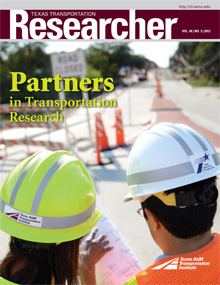When you get down to it, roadside safety is about minimizing negative impacts; in some cases, quite literally.
Safety in work zones is no different. The biggest threat to work-zone safety occurs when motorists and workers come into conflict — when a car strays into a work-zone area, for example, putting all involved at risk.
Of course, the safest solution is to always use positive protection to separate motorists and workers while work is ongoing. But that’s not always possible in today’s economic environment. Cash-strapped states have to optimize how resources are spent on their transportation networks.
Though the Texas Department of Transportation (TxDOT) has had procedures in place for assessing the need for positive protection for years, those guidelines relied on specific assumptions about where intrusions might occur. The agency decided it needed more comprehensive guidelines, so a team led by Jerry Ullman, manager of the Texas A&M Transportation Institute’s Work Zone and Dynamic Message Sign Program, conducted a project to develop the needed guidelines.
“I feel that our real contribution in this project lies in generalizing the potential location of the worker or equipment throughout a given work-zone area,” says Ullman. “This makes our model more realistic and, therefore, more accurate when applied to real-world situations.”
Researchers looked at the number of vehicles traveling in a corridor to estimate the probability that a motorist-worker conflict would occur. Using those data, Ullman and his team compared the cost of installing and maintaining traffic barriers with the societal costs associated with injuries and deaths resulting from crashes. From there, they came up with specific break-even recommendations for when Texas should introduce positive protection to work zones.
Put simply, the study showed that the closer the work area is to the travel lanes, the more justified positive protection is. That’s because there’s a higher probability, with a closer proximity of motorist to worker, for conflict to occur. As the distance between the travel lanes and the work-zone area increases, the cost benefit of installing protective barriers decreases at lower volumes.
Researchers also found that steel and mobile barriers can be cost-effective alternatives for short-duration mobile operations with workers on foot in high-volume, high-speed corridors. Truck-mounted attenuators were also found to be very cost effective, offsetting their costs in less than a year of use in most cases.
“Through this project, the researchers were able to determine when and under what conditions barrier protection is justified,” says Research Engineer Wade Odell of TxDOT’s Office of Research and Technology Implementation. “This is significant in that the contractor can provide motorists with proper protection in a work zone and still provide the protection cost effectively.”

